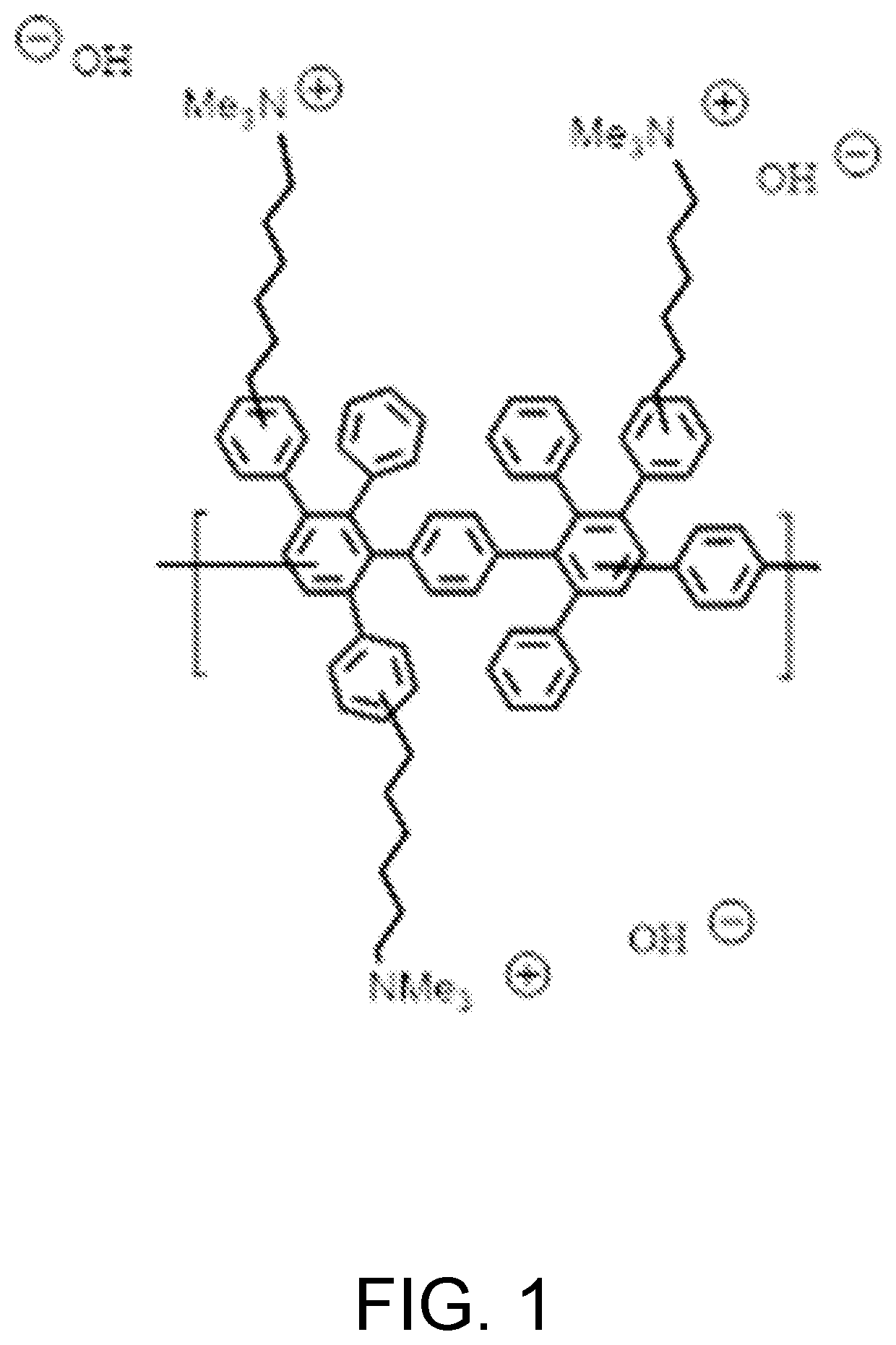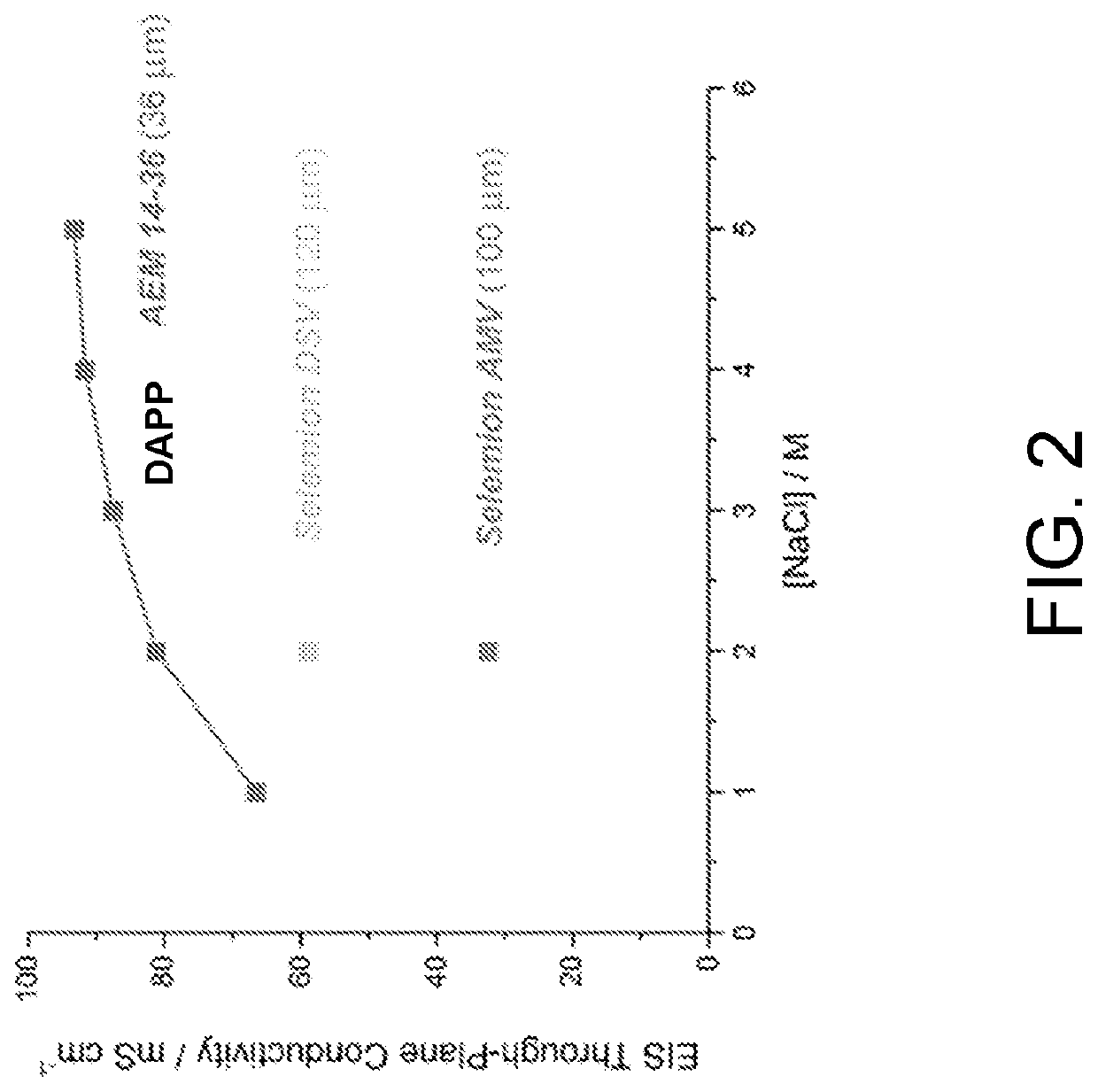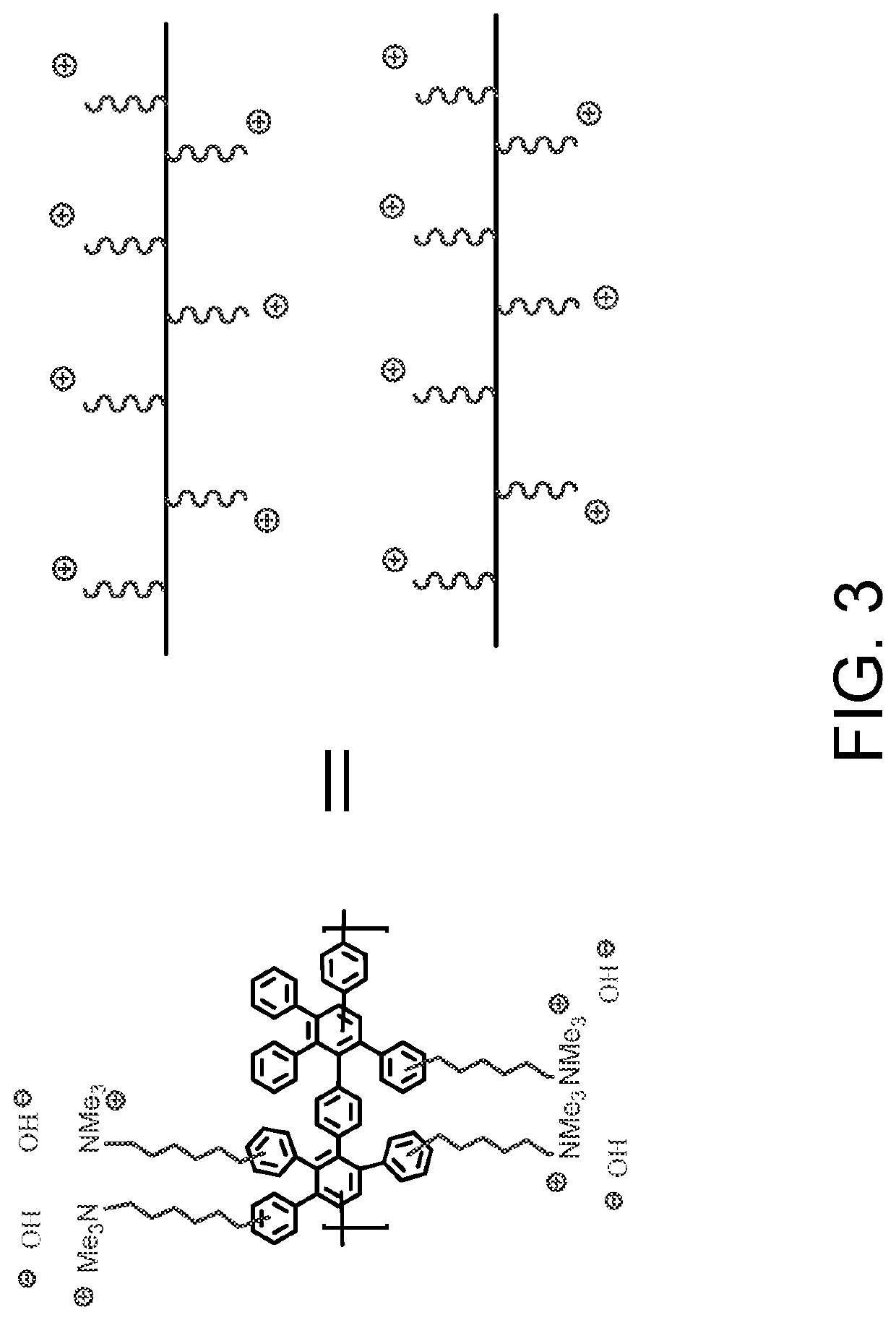Poly(phenylene) with High Ion Selectivity for Use in Anion Exchange Membranes
a technology of anion exchange membrane and polyphenylene, which is applied in the direction of anion exchanger materials, etc., can solve the problems of reducing voltage efficiency, limiting current density and power output, adversely affecting rfb performance, etc., and achieves high ion selectivity, speed up reaction speed, and improve ion selectivity
- Summary
- Abstract
- Description
- Claims
- Application Information
AI Technical Summary
Benefits of technology
Problems solved by technology
Method used
Image
Examples
Embodiment Construction
[0014]In FIG. 1 is shown the chemical structure of Diels Alder poly(phenylene) [DAPP] that has been functionalized with quaternary ammonium groups. DAPP comprises a polymer backbone made entirely of phenyl or benzene units which gives this polymer high chemical stability, and the stiff backbone (low backbone rotation) provides high temperature operation. See U.S. Pat. No. 8,809,483, issued Aug. 19, 2014, which is incorporated herein by reference. This combination of physical properties is not found commonly in other polymer systems. The synthesis of anionic DAPP has been previously described. See M. Hibbs, J. Polym. Sci., Part B: Polym. Phys. 51, 1736 (2013); and M. R. Hibbs et al., Macromolecules 42, 8316 (2009), which are incorporated herein by reference. The backbone DAPP can be synthesized by the Diels-Alder reaction of bis-tetraphenyl cyclopentadienone with p-bis(ethynyl)benzene, with a wide range of functionalities. A common cationic functional group that can be attached to th...
PUM
| Property | Measurement | Unit |
|---|---|---|
| temperature | aaaaa | aaaaa |
| boiling point | aaaaa | aaaaa |
| boiling point | aaaaa | aaaaa |
Abstract
Description
Claims
Application Information
 Login to View More
Login to View More - R&D
- Intellectual Property
- Life Sciences
- Materials
- Tech Scout
- Unparalleled Data Quality
- Higher Quality Content
- 60% Fewer Hallucinations
Browse by: Latest US Patents, China's latest patents, Technical Efficacy Thesaurus, Application Domain, Technology Topic, Popular Technical Reports.
© 2025 PatSnap. All rights reserved.Legal|Privacy policy|Modern Slavery Act Transparency Statement|Sitemap|About US| Contact US: help@patsnap.com



